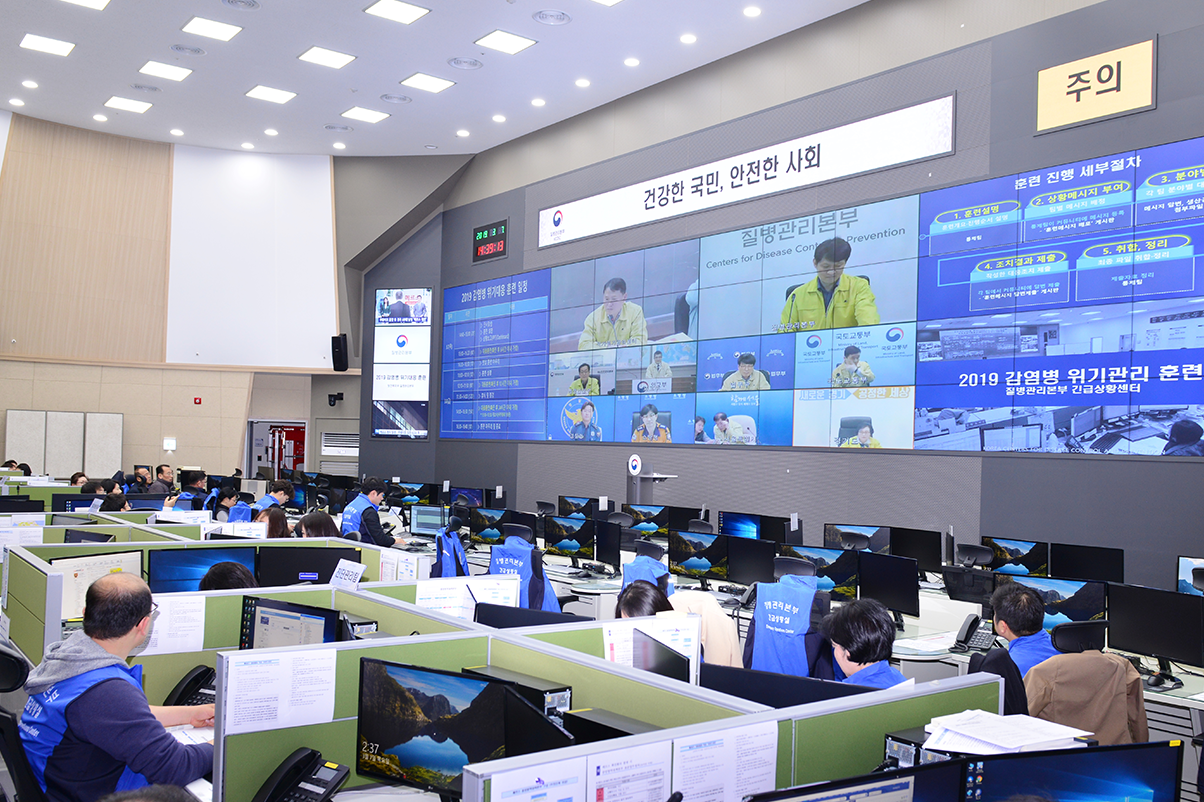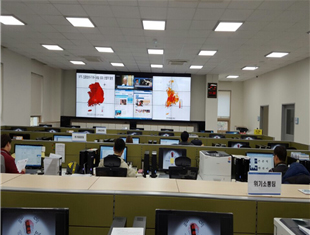contents area
Emergency Operations Center: EOC
detail content area

Emergency Operations Center
: EOC
In the event of a disaster, the EOC functions as the command and control center for public health crisis responses that is responsible for collecting information on, coordinating, and managing national epidemic prevention measures in order to prevent the further spread and outbreak of infectious diseases and to end public health crises as early as possible.
Introduction
- The EOC was established based on the national disease control system that was restructured on September 1, 2015 to strengthen the country’s capacity to respond to infectious diseases.
- The EOC operates 24/7 to receive notifications and collect information on the emerging and re-emerging infectious diseases such as MERS that can cause public health crisis.
- The EOC manages outbreak situations to make sure that infections are properly handled according to the pre-distributed guidelines for specific infectious diseases.
 In the event of an infectious disease crisis, the EOC, which has 40 seats in total, is immediately expanded to the Central Epidemic Control Countermeasure Headquarters (Activation : persons in charge in relevant departments and ministries will be dispatched to the EOC). It will carry out various activities for the control and early termination of the crisis situation, such as securing and distributing manpower and material resources, epidemiological investigation, and cooperation with local governments and related organizations. The Rapid Response Team (consisting of a total of 10 teams of pest controllers, epidemiologists, and civilian experts) will be immediately dispatched to the site and plays a role in preventing the further spread of infectious diseases through on-site disease control activities and early epidemiological investigations.
In the event of an infectious disease crisis, the EOC, which has 40 seats in total, is immediately expanded to the Central Epidemic Control Countermeasure Headquarters (Activation : persons in charge in relevant departments and ministries will be dispatched to the EOC). It will carry out various activities for the control and early termination of the crisis situation, such as securing and distributing manpower and material resources, epidemiological investigation, and cooperation with local governments and related organizations. The Rapid Response Team (consisting of a total of 10 teams of pest controllers, epidemiologists, and civilian experts) will be immediately dispatched to the site and plays a role in preventing the further spread of infectious diseases through on-site disease control activities and early epidemiological investigations.
History
- The national disease control system was revised at the National Policy Coordination Conference after the MERS crisis in 2015 (SEP 2015)
- The EOC system operated temporarily (NOV 2015 ~ DEC 2015)
- The EOC system was established within KCDC for regular operation (JAN 2016)
- The EOC began operating with 3 government employees (regular work) and 11 researchers (shift work) (JAN 2016 ~)
- ※ Response action team’activities and EOC activation
- MERS response action team (DEC 2015)
- Zica virus response action team (JAN 2016 ~ APR 2017)
- Rio Olympic response action team (JUL 2016 ~ OCT 2016)
- Cholera response action team and EOC activated (AUG 2016 ~ OCT 2016)
- Avian Influenza human transmission response action team (NOV 2016)
* Other activities include emergency preven tion of epidemics work (MAY~SEP 2016) and bioterrorism response (JAN 2016)
Functions and roles
- Information gathering : continuous collection and dissemination of domestic and international infectious disease information
- Regular response : 24 hour reception of infectious disease events and maintenance of an ongoing response system
- Rapid dissemination : Rapid dissemination of the response status to the persons in charge and related organizations when an infectious disease crisis situation is recognized
- Emergency response : when emergency situation of infectious disease occurs, the EOC will be expanded to the Response Action Team within KCDC or the Central Epidemic Control Countermeasure Headquarters
Construction of the EOC building
- Construction of the EOC building with a maximum of 100 seats is scheduled to be completed in 2017 and a system to be constructed in 2018
Image of the new Emergency Operations Center building


